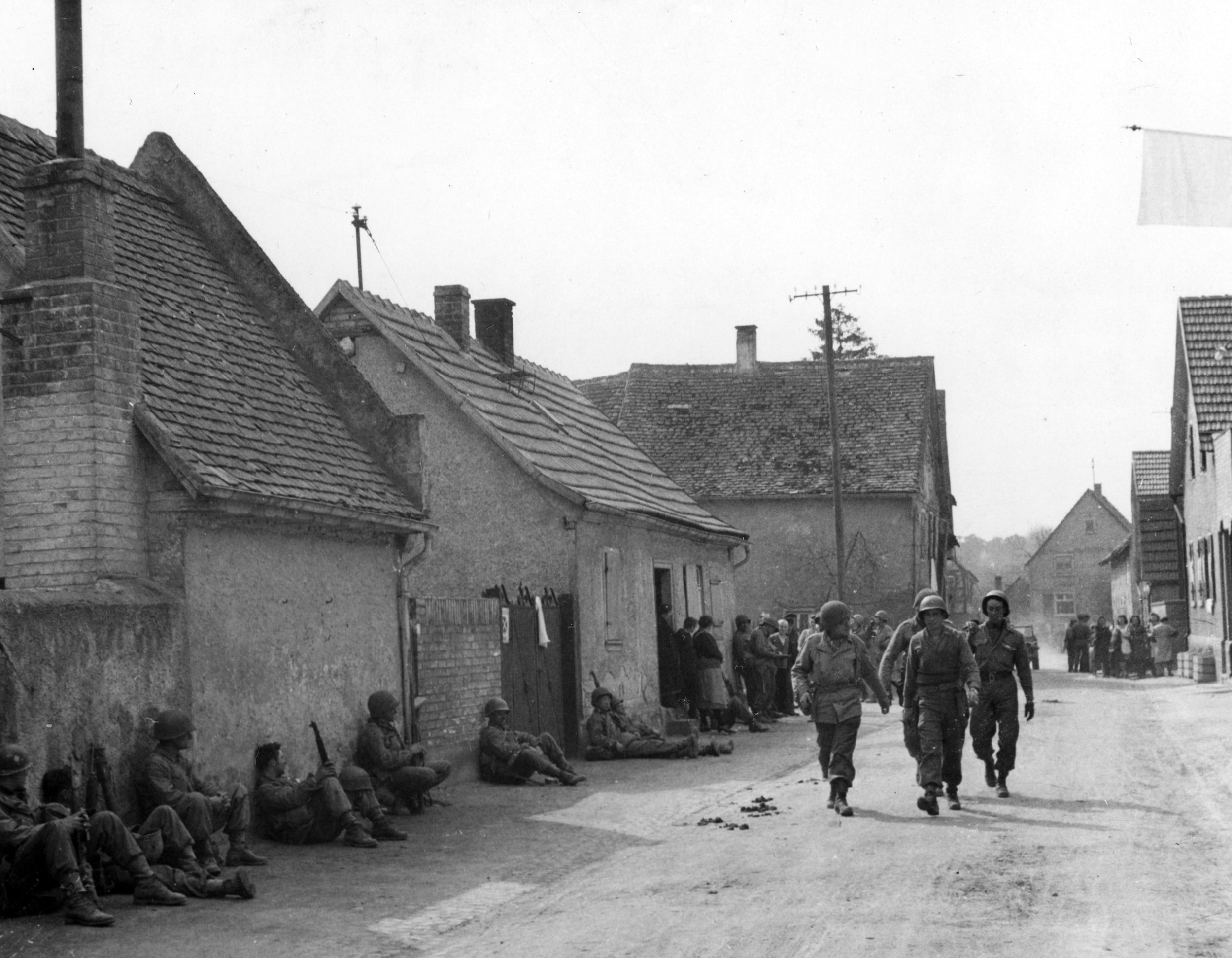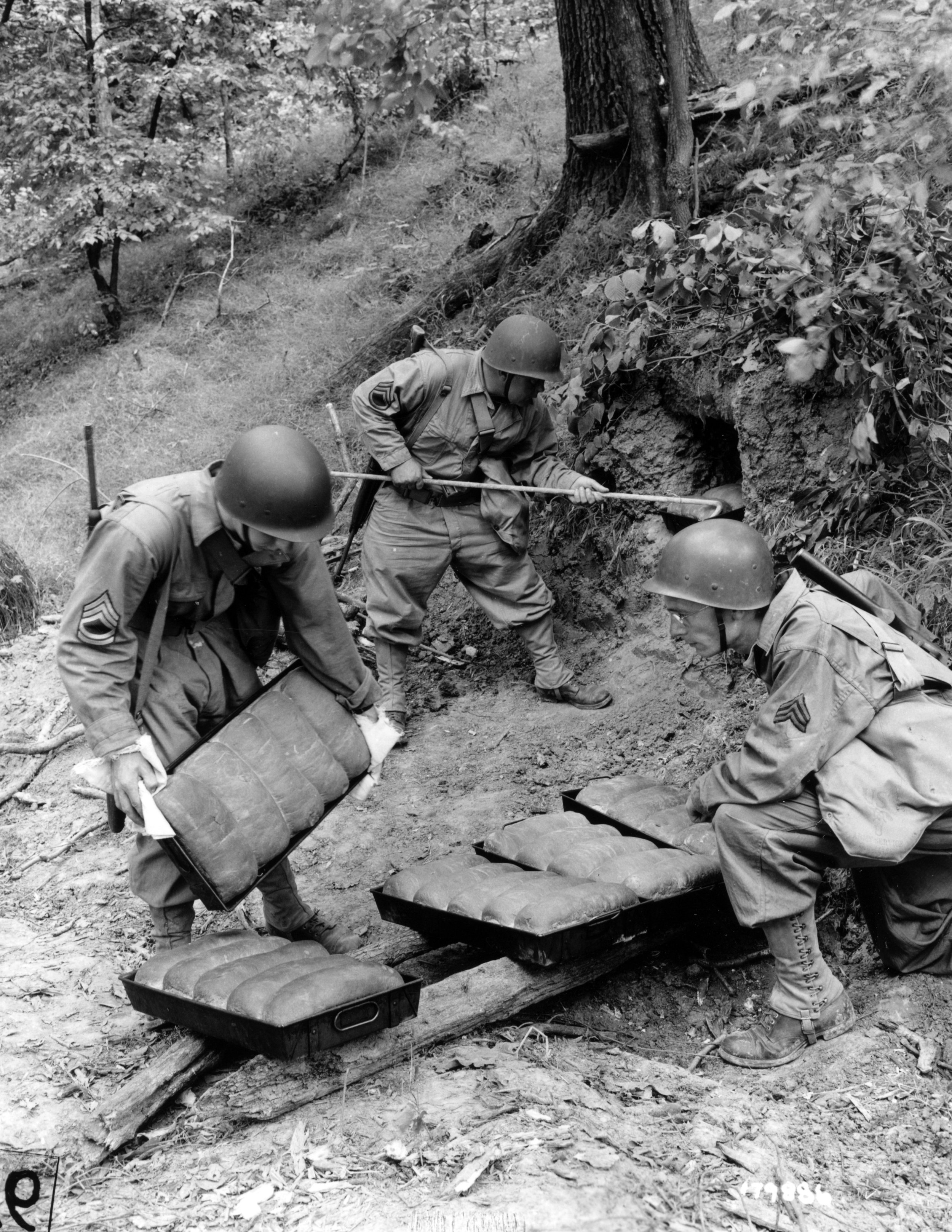
Unit Journals
The unit journals detailed the movements and actions of each unit in the division every day that they were in Europe during the war and in occupation duty. Each unit in the division was responsible for maintaining a unit journal, which is essentially a log of important hour to hour, or sometimes minute to minute, movement and communications. Along with tracking movements and communications, each unit journal also highlights some of the important logistical actions or lessons that were learned and employed throughout their time in Europe. One valuable lesson that was documented was the need for vehicle mechanics and people to work on road maintenance to help with the movement of traffic and men in the rear.
The unit journals also detailed some of the combat experiences of each unit, the training that soldiers periodically received in new weapons or tactics, and planned actions for the following days. These unit journals, along with the combat and after-action reports, help to tell the story of the expectations and planned combat operations versus the reality that occurred on the battlefield. These journals also help to understand the fluidity of life and expectations on the frontlines during World War II.
-

409th Infantry Regiment
-

410th Infantry Regiment
-

411th Infantry Regiment
-

328th Medical Battalion
-

103rd Quartermaster Company
-

803rd Ordnance (Light Maintenance) Company
-

103rd Military Police Platoon
Photo Credit: 1st Lt. Mark A. Freeman, SC 335284- 5th Infantry Division, 3rd U.S. Army troops rest in the streets of Hassloch, Germany, after the town was captured. 25 March, 1945. U.S. Army Signal Corps Archive via Flickr.
409th Infantry Regiment photo: T/4 Irving Leibowitz, SC 337382- Here, an enemy machine gun opens up from the far side of the valley. Both men watch intently, trying to spot it. (409th Infantry Regiment). German/Austrian Border. 1 May, 1945 U.S. Army Signal Corps Archive via Flickr.
410th Infantry Regiment photo: T/4 Clifford O. Bell, SC 270822- Infantrymen of the 79th Division file into columns down street of newly-captured town of Soufflenheim, France. 13 December, 1944. U.S. Army Signal Corps Archive via Flickr.
411th Infantry Regiment photo: T/5 Joseph A. Bowen, SC 270629- 7th U.S. Army Infantrymen of the 7th Inf. Regt. (3rd Infantry Division) prepare to rush a house in which Nazi snipers are hidden. Guiderkirch, France. 15 March, 1945. U.S. Army Signal Corps Archive via Flickr.
328th Medical Battalion photo: T/4 Clifford Bell, SC 201691- Medics carry a wounded infantryman into aid station of 103rd Division of 7th U.S. Army near Obermodern, France. Man was wounded by anti-personnel mine while on patrol. 27 February, 1945. (103rd Infantry Division) U.S. Army Signal Corps Archive via Flickr.
103rd Quartermaster Company photo: Unknown photographer, SC 179886- The baking scholl of the Quartermaster Group at Camp Mills, Ill., while teaching its men the use of the most modern camp and field baking equipment, also trains them to improvise ovens and other equipment in the event of such equipment being destroyed on the battlefield. S/Sgt. Joseph Perno, S/Sgt. William F. Post and Sgt. Philip Seitz operating a bank oven. 1943. U.S. Army Signal Corps Archive via Flickr.
803rd Ordnance (Light Maintenance) Company photo: T/5 Samuel Gilbert, SC 364538- T/4 Frank Usiak of Pittsburgh, Pa., 3rd U.S. Army (4th Armored Division), gives his .50 caliber water-cooled machine gun an overhaul near Echternach, Luxembourg. 23 February, 1945. U.S. Army Signal Corps Archive via Flickr.
103rd Military Police Platoon photo: R. W. Crampton. SC 199105- German prisoners taken in the Ardennes sector by 3rd Armored Division are checked before being moved to cages. 14 January, 1945. U.S. Army Signal Corps Archive via Flickr.